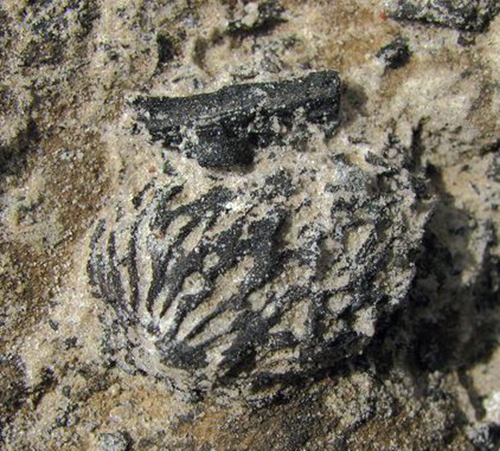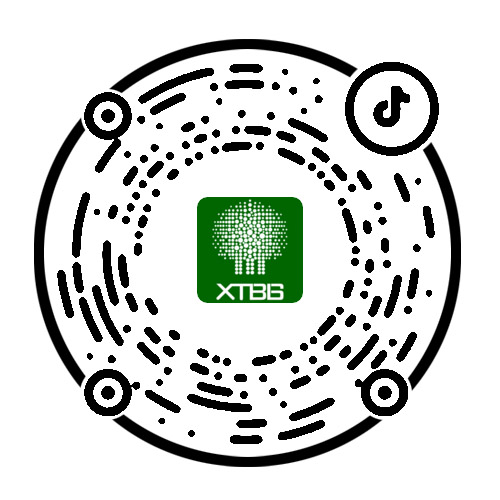版納植物園在云南發(fā)現(xiàn)的最早桃化石受到媒體廣泛關(guān)注
近期,版納植物園古生態(tài)組以Peaches preceded humans: Fossil evidence from SW China為題在Scientific Reports上發(fā)表了世界目前已知最早的桃化石,該文章被Nature中文網(wǎng)站列為11月的研究亮點,中國科學(xué)院在院網(wǎng)站首頁以封面圖片進行了報道。該項研究還受到了國際主流媒體的廣泛關(guān)注,如Science網(wǎng)站做了題為“現(xiàn)代人類出現(xiàn)之前中國就出現(xiàn)了桃”的報道;Discovery頻道介紹說:“昆明桃的發(fā)現(xiàn)更加證明了現(xiàn)代栽培桃起源于中國”;華盛頓郵報也指出:“這項研究表明,桃并沒有借助現(xiàn)代人類的幫助就已經(jīng)出現(xiàn)”。
桃(Prunus persica)為薔薇科李屬植物,盡管桃是全球最為重要的經(jīng)濟果樹之一,但目前關(guān)于其起源與栽培的歷史還知之甚少。已有的化石記錄都是距今1萬年內(nèi)的考古學(xué)證據(jù)。版納植物園古生態(tài)組的周浙昆研究員、蘇濤副研究員與美國賓夕法尼亞州立大學(xué)、中科院昆明植物所、昆明理工大學(xué)合作,研究了產(chǎn)自昆明市北部汽車客運站附近的八個桃核化石。這批化石的形態(tài)特征幾乎和現(xiàn)代桃核完全相同,鑒于缺乏對整個植物形態(tài)的認識,將化石種定為昆明桃(Prunus kunmingensis)。這一發(fā)現(xiàn)將桃的演化歷史提前到距今約兩百六十萬年,增加了我國西南地區(qū)在討論栽培桃演化中的重要性。同時,該研究推測昆明桃的果實大小和現(xiàn)代栽培桃的較小果實品種接近,意味著桃在野生狀態(tài)下可能被早期人類直接利用,通過后期長時間的栽培才逐漸形成種類繁多的現(xiàn)代品種。

圖一 發(fā)現(xiàn)于昆明北部汽車站附近的桃核化石

圖二 古人類采摘桃復(fù)原圖
附:部分媒體的相關(guān)報道(Peter Wilf教授收集整理)
China had peaches before it had humans. Science Now (AAAS), 2 December 2015.
World’s oldest peach found in China, presumably no longer delicious. By Rachel Feltman, Washington Post, 2 December 2015.
By Ana Verayo, China Topix, 2 December 2015.
Fossilized peach pits look identical to modern varieties of the fruit. By Natalia Hall, Northern Californian 1 December 2015.
. By Rogelio Estrada, Seating Chair, 2 December 2015.
Fossilized peach pits were discovered in China. By Lori Martinez, Regal Tribune, 2 December 2015.
The Paleo Peach: First fossil peaches discovered in China reveal ancient snack. By Catherine Griffin, Science World Report, 2 December 2015.
2.5-Million-Year-Old Fossilized Peaches Found in China. By Natali Anderson, Sci-News.com, 2 December 2015
Scientists uncover the world’s oldest peach pits in China. By Sam Catherman, BABW News, 2 December 2015.
Paleo Peaches? First fossil peaches discovered In China. By Samantha Mathewson, Nature World News, 2 December 2015.
World’s oldest peach pit reveals juicy secrets: 2.5 million-year-old fruit originated in China BEFORE the arrival of humans. By Cheyenne MacDonald, Daily Mail, 2 December 2015.
Paleo peach pits: Was the sweet, juicy fruit in China before humans? By Eva Botkin-Kowacki, Christian Science Monitor, 2 Decemeber 2015.
Scientists find world's oldest peach pits near Chinese bus stop. By Brooks Hays, UPI, 2 Dcember 2015.
Oldest peach pits found In China shed light on evolution of the fruit. By Katrina Pascual, Tech Times 2 December 2015.
The amazing, bizarre history of the Peach — uncovered at last. By Dan Taylor, Morning Ticker, 2 December 2015.
World’s oldest peach pits shed light on the evolution of the fruit. By Hira Bashir, I4U News, 2 December 2015.
Oldest peach remains were found in China. By Denise Ehrlich, Capital Berg, 2 December 2015.
Fossilized peach pits from 2.5 million years ago have been found. By Brian Galloway, Capital Wired, 2 December 2015.
Fossilized peachs dated 2.5 million years old discovered in China. Dipatch Tribunal, 2 December 2015.
New fossils prove Peach’s mother soil is China. By Ray Courtney, Albany Daily Star. 2 December 2015.
Earliest peach fossils found in Yunnan. Chinese Academy of Sciences news, 1 December 2015.
Oldest peach pits found in China. By Rossella Lorenzi, Discovery News, 1 December 2015.
World’s oldest peach pits reveal juicy secrets. By Megan Gannon. Livescience.com, 1 December 2015.
2.5 million year old peach fossils found in China. By Subodh Varma, The Times of India 1 December 2015.













